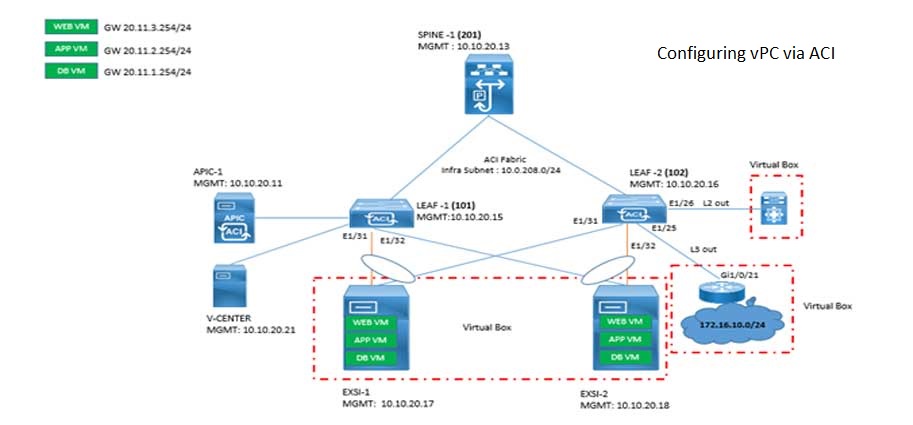
Introduction to Switching
Let's start our discussions on switching concepts with the definition of switch and how it functions, followed by MAC address flooding and other important concepts. In order to understand the switching, good understanding on them is essential.
A switch is a network device used in computer networks to connect other devices such as computers, laptops, printers, and servers etc. together within a local area network (LAN).
It operates at the data link layer (Layer 2) of the OSI (Open Systems Interconnection) model (Its a part of CCNA), here you get answer to the question like what is mac address and many more.
The primary function of a switch is to provide the connectivity between multiple devices and receive data (in the form of frames) from one device connected to it and then forward that data to the appropriate destination device based on the device's MAC address. You can have more understanding on this through self learning or cisco training and certifications using documents available on cisco website.
Cisco switches are more advanced and efficient than traditional hubs. Unlike hubs, which simply broadcast data to all connected devices, switches use a process called frame switching to intelligently send data only to the device it is intended for.
This feature allows switches to reduce unnecessary network traffic, prevent collisions, and improve overall network performance. Typically, Cisco switches looks like as shown in the below picture.

Switches come in various sizes, from small home or office switches with a few ports to large enterprise-level switches with numerous ports to accommodate a vast number of devices. Understanding on cisco switches hardware architecture though instructor led live CCNA training, with hands-on practice will solidify your initial knowledge to learn advance topics like routing and many more.
What is MAC Address?
MAC address (Media Access Control address) is a unique identifier assigned to each network interface card (NIC) or network adapter (as shown in the picture below) of devices connected to a network. Please note, these switching concepts are a part of ccna course, here we have touched the brief introduction to mac address and its other core concepts.

The MAC address is a 48-bit (6-byte) address typically represented in hexadecimal format (e.g., 00:1A:2B:3C:4D:5E). It is hard coded into the network interface hardware during the manufacturing process, which means that no two devices in the world should have the same MAC address.
Now to understand switching, mac address flooding, learning and aging concepts, Let's take some configuration examples so that beginners can understand easily.
Learning MAC Address
MAC address learning is like a switch's memory. When a switch sees a device connected to one of its ports, it remembers its unique MAC address and which port it is connected to.
This way, when it later receives data (frames) from that device, it knows exactly where to send the data to reach that device efficiently.
Suppose we have a switch with three devices connected to its ports:
Device A with MAC address 11:11:11:11:11:11 connected to Port 1
Device B with MAC address 22:22:22:22:22:22 connected to Port 2
Device C with MAC address 33:33:33:33:33:33 connected to Port 3
The switch learns these connections automatically as data flows between devices.
Mac Address Aging
MAC address aging is like a cleaning process. If a device is no longer connected or active, the switch forgets about it after a while to keep its memory tidy.
If Device C is disconnected from Port 3, the switch will eventually remove the entry for MAC address 33:33:33:33:33:33 from its memory through aging.
Mac Address Frame Switching
Frame switching is like a postal service sorting and delivering letters to their correct destinations. When the switch receives data (frames), it looks at the address on the package (the destination MAC address).
Then, it checks its memory (the MAC address table) to find the correct "delivery address" (outgoing port) for that package. The switch only sends the data to the correct destination, just like a mail carrier delivering letters to the right houses. As an example
If Device A wants to send data to Device B, the switch will look up the MAC address table, find the entry for MAC address 22:22:22:22:22:22 (Device B's address), and then send the data to Port 2, where Device B is connected.
MAC Address Flooding
Frame flooding is like shouting in a crowded room when you don't know the specific person you want to talk to. When the switch receives data (frames) with a destination address it doesn't recognize (unknown MAC address), it broadcasts the data to all its ports, except the one it received the data from.
This way, the switch ensures that the data reaches the intended recipient, even if it's not sure where that recipient is located. As an example
If a new device, Device D, joins the network and sends data with a MAC address the switch hasn't seen before (e.g., 44:44:44:44:44:44), the switch will flood the data to all ports (except the one where the data came from).
This way, it reaches all connected devices, including Device B (with MAC address 22:22:22:22:22:22), which can then respond to the new device.
MAC Address Table Building
Think of the MAC address table as a phonebook that the switch uses to keep track of which device (MAC address) is connected to which port. When a device sends data, the switch checks the phonebook to find the correct port to send the data, just like you'd check a phonebook to find someone's phone number.
Suppose the switch's MAC address table looks like this:
MAC Address: 11:11:11:11:11:11, Port: 1
MAC Address: 22:22:22:22:22:22, Port: 2
MAC Address: 33:33:33:33:33:33, Port: 3
When the switch receives data with the destination MAC address 22:22:22:22:22:22, it looks up the table and finds that the data should be sent out through Port 2, where Device B is connected.
Mac Address Table Configuration Example
The above concepts are managed automatically by switches. There is typically no manual configuration needed for learning MAC address, MAC address aging, and frame switching.
However, if you want to see the MAC address table on a switch, you can use the following command in the switch's configuration interface (CLI):
#show mac address-table
This command will display the MAC addresses, their associated ports and VLAN on which these ports configuration that the switch has learned.
Keep in mind that modern switches handle mac address flooding and other processes automatically, so you don't usually need to manually configure them.
Remember, these concepts are fundamental to understanding how switches operate and manage network traffic efficiently. As a beginner, grasping these concepts will help you build a solid foundation in networking.
Don't Miss to Checkout our Next Articles
Cisco: Configuring Trunk Ports and Native VLANs
Steps for Configuring Cisco Port Channels
Other Popular & Useful Articles
Comments (0)
Categories
Popular posts


Cisco Nexus Port Channel: Configuring ...
6 May 2024
Configure Rapid PVST on Cisco Nexus
26 Apr 2024
Palo Alto Exam Cost: PCNSA, PCNSE & More
27 Apr 2024
Cisco ACI VPC Configuration Task Steps
28 Apr 2024Recent posts

CCNA Exam Fees and Expenses Breakdown
16 May 2024
CCNA vs CCNP Certification: Differences
16 May 2024
What is CCNA: Exploring Its Significance
16 May 2024
Step by Step cisco WLC configuration
15 May 2024



